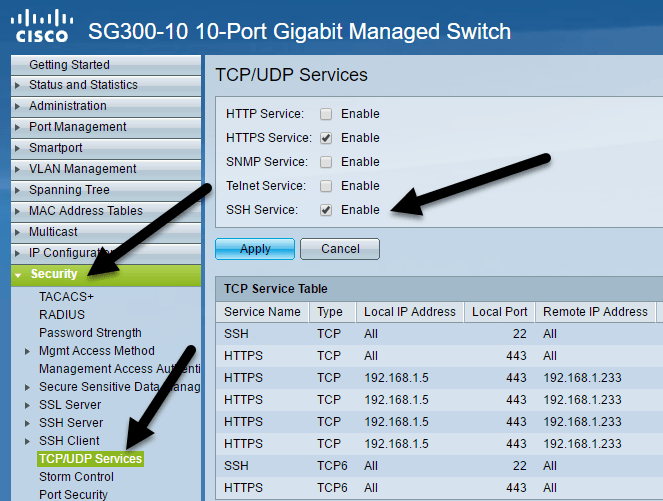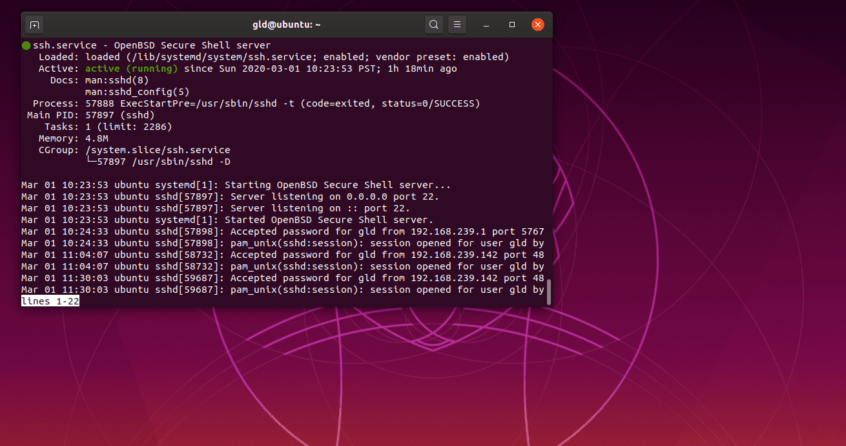Applies to Windows Server 2019, Windows 10
OpenSSH is a connectivity tool for remote login that uses the SSH protocol. It encrypts all traffic between client and server to eliminate eavesdropping, connection hijacking, and other attacks.
In order to enable SSH-based access on the AP, you first must configure the AP as an SSH server. Follow these steps in order to configure an SSH server on the AP from CLI: Configure a host name and domain name for the AP. AP#configure terminal!- Enter global configuration mode on the AP. AP#hostname Test!- This example uses 'Test. Enable SSH on Raspberry Pi in Headless Mode Many users run these devices as a web or media server and configure them via SSH. If you use your Raspberry Pi without a monitor and keyboard, then the only way to enable SSH in headless mode is to use a blank boot file. For this task, you need to create an empty ssh file on another machine.
The SSH server must be configured to create an SSH subsystem to host a PowerShell process on the remote computer. And, you must enable password or key-based authentication. Set up on a Windows computer Install the latest version of PowerShell. By enabling the SSH service in Linux, you can use the SSH protocol as an FTP (File Transfer Protocol) server or, you can get remote access to another Pc. Enabling SSH service can connect your device to another device or server through a secure tunnel where your identity and data transmissions are totally safe and encrypted.
OpenSSH can be used to connect Window 10 clients to Windows Server 2019. OpenSSH Client is available to install on Windows 10 build 1809 and later, while OpenSSH Server is available to install on Windows Server 2019 and later.
Important
How can I enable ssh on my Cisco 3750 Catalyst Switch? A: By default, when you configure a Cisco device, you have to use the console cable and connect directly to the system to access it. Follow the steps mentioned below, which will enable SSH access to your Cisco devices.
If you downloaded OpenSSH from the GitHub repo at PowerShell/openssh-portable, follow the instructions listed there, not the ones in this article.

Install OpenSSH using Windows Settings
Both OpenSSH components can be installed using Windows Settings. OpenSSH Server is installed on Windows Server and OpenSSH Client is installed on Windows 10 devices.
Ubuntu Enable Ssh
To install the OpenSSH components:
Open Settings, select Apps > Apps & Features, then select Optional Features.
Scan the list to see if the OpenSSH is already installed. If not, at the top of the page, select Add a feature, then:
- On Windows 10, find OpenSSH Client, then click Install
- On Windows Server 2019, find OpenSSH Server, then click Install
Once setup completes, return to Apps > Apps & Features and Optional Features and you should see OpenSSH listed.

Note
Installing OpenSSH Server will create and enable a firewall rule named OpenSSH-Server-In-TCP. This allows inbound SSH traffic on port 22. If this rule is not enabled and this port is not open, connections will be refused or reset.
Install OpenSSH using PowerShell

To install OpenSSH using PowerShell, run PowerShell as an Administrator.To make sure that OpenSSH is available, run the following cmdlet:
This should return the following output:
Then, install the server or client components as needed:
Both of these should return the following output:
Start and configure SSH Server
To start and configure OpenSSH server for initial use, open PowerShell as an administrator, then run the following commands to start the SSHD service:
Connect to SSH Server
Once installed, you can connect to OpenSSH Server from a Windows 10 device with the SSH client installed using PowerShell as follows. Be sure to run PowerShell as an administrator:
Once connected, you get a message similar to the following:
Selecting yes adds that server to the list of known ssh hosts on your Windows client.
You are prompted for the password at this point. As a security precaution, your password will not be displayed as you type.
Once connected, you will see the Windows command shell prompt:
Enable Ssh Ufw
Uninstall OpenSSH using Windows Settings
Ssh For Windows
To uninstall OpenSSH using Windows Settings:
- Open Settings, then go to Apps > Apps & Features.
- Go to Optional Features.
- In the list, select OpenSSH Client or OpenSSH Server.
- Select Uninstall.
Uninstall OpenSSH using PowerShell
To uninstall the OpenSSH components using PowerShell, use the following commands:
Enable Ssh Usg
You may need to restart Windows afterwards if the service was in use at the time it was uninstalled.
